Posted by Teresa on April 19, 2013 under Landlord Tips | 
 In most areas, keeping residents and your rental property safe doesn’t require bars on the windows and doors. Common-sense practices can deter thieves from targeting your property, including crime-fighting landscape design.
In most areas, keeping residents and your rental property safe doesn’t require bars on the windows and doors. Common-sense practices can deter thieves from targeting your property, including crime-fighting landscape design.
Properly placing plants, trees, fences and other landscape elements can make your property unattractive to thieves and other lawbreakers. A new approach is called Crime Prevention through Environmental Design, which includes using landscaping and site layout to support natural surveillance, access control, territorial reinforcement, and image and maintenance.
Natural surveillance means keeping trees and shrubs trimmed so that all sightlines are clear for tenants and people walking or driving by. This means no overgrown shrubbery in front of windows or low-hanging tree branches covering walkways.
When you discourage the wrong people from entering your property, you’re practicing natural access control. Simple practices like installing noisy gravel paths and shrubs with spines or prickly leaves can keep would-be criminals away from your rental units. Avoid shrubs and trees that allow easy access to second-story windows and balconies.
Territorial reinforcement can mean a simple fence, which designates the boundaries of the property, as well as well-placed lighting, which will reveal anyone sneaking around at night. Keep plants trimmed around light fixtures for optimum coverage.
Remember that promoting a clean and organized image sends a signal that people who live in and own the property care about it and keep an eye on it. Neglected properties with overgrown landscaping, garbage strewn about and broken sidewalks, shutters, fences and other elements invite more problems.
When it comes time for planting shrubs and trees, allow more room between them. Less is more, especially when the plants grow and fill in. You don’t want to provide any hiding places for less-than-desirable visitors!
Posted by Teresa on January 21, 2013 under Housing Trends | 
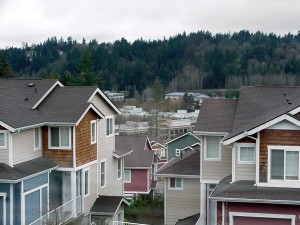 Some of the housing markets hit hard by the housing bubble were Phoenix, Las Vegas, Tampa and several markets in California. As prices fell to rock bottom levels, real estate investors made major purchases in these markets. And now, as prices begin rising, investment groups are looking for the next place to find a bargain.
Some of the housing markets hit hard by the housing bubble were Phoenix, Las Vegas, Tampa and several markets in California. As prices fell to rock bottom levels, real estate investors made major purchases in these markets. And now, as prices begin rising, investment groups are looking for the next place to find a bargain.
In Phoenix, the percentage of homes purchased by investors in November 2012 was 28%, down from August’s mark of 36%. Meanwhile, year-over-year home prices in Phoenix were up 24% in November, compared to 7.4% nationwide.
Investors are looking for new markets to buy homes and convert them to rental properties. According to a recent JPMorgan Chase research report, major institutional investors are planning to invest as much as $10 billion in the single-family rental market. Their targets? Three bedroom, two-bath homes in the $100,000 to $125,000 range. They’ll make repairs, rent them out, and bet on the price appreciating in the next several years.
That figure equals about 80,000 homes, out of approximately 12 million single-family rental homes across the nation, which are mostly owned by individual investors.
Some of the bigger players are:
- The Blackstone Group, which has spent $2.5 billion on 16,000 homes. It is purchasing around 2,500 homes each month.
- Colony Capital, which is investing up to $150 million per month this year, after purchasing 5,000 homes last year.
- Waypoint Homes, which expects to own 10,000 homes by the end of the year.
Many groups started in Phoenix, then went into California, Atlanta, Tampa, Orlando, Chicago, Las Vegas and Charlotte. Some are buying at a faster pace, perhaps because home prices are rising faster than expected. If prices rise above a certain point, they won’t bring high enough rents to make a sound investment.
Real estate markets in Atlanta and Tampa are now seeing the impact of investors coming in, with dozens of offers on foreclosed homes, many by cash-paying buyers. Good buys are becoming harder to find. Individual homebuyers are seeing more competition from small and large investors, resulting in bidding wars and reducing inventories of homes for sale.
Nationwide, investors purchased 19% of homes in November, according to the National Association of Realtors, which is down 23% from January and February 2012. Areas where investor sales are leveling off include Tucson; Oakland; Tacoma, Washington; Washington D.C. and Durham, N.C.
This pattern is expected to continue as home prices rise and investors exit out of markets, then return when prices stabilize.
Posted by Teresa on November 30, 2011 under Landlord Tips | 
 The biggest multi-family housing owners in the U.S. have been using a secret weapon to maximize rental revenue and minimize vacancy. For about the past ten years, the landlords of a collective one million rental apartments have been renewing leases and setting rents using powerful technology to manage revenue. The software applications are similar to those used by airlines and hotels to set ticket prices and room rates.
The biggest multi-family housing owners in the U.S. have been using a secret weapon to maximize rental revenue and minimize vacancy. For about the past ten years, the landlords of a collective one million rental apartments have been renewing leases and setting rents using powerful technology to manage revenue. The software applications are similar to those used by airlines and hotels to set ticket prices and room rates.
The software instantly analyzes competitor rents, the current rental market, seasonal trends, property history and other variables to calculate the highest feasible rent at a given time. The landlords can then offer the tenant or prospective tenant that rent. It may be a lower rate for a less-desirable unit, so the tenant can save money. It may mean an increase in rent for a renewing tenant, based on the going rate for their unit.
Some suggestions made by the software are surprising. One landlord began offering one-month leases when an analysis showed a demand for it. Leasing a $1,000 unit for a single month at $3,000 turned out to be good idea—that they would not have previously considered.
Other rental property owners say the software helps them become more conscious of their competitors and why they were losing leases. The number of variables considered is much more extensive than a human would think to include.
While it’s a given that the biggest landlords would utilize revenue management software, it appears to be gaining popularity with smaller rental property owners as well. Users say the software pays for itself within months, with 3 – 7% revenue increases from the start.
Posted by Teresa on July 19, 2011 under Landlord and Tenant FAQs, Screening and Background Checks | 
 Landlords approach apartment or rental house rehabs differently. Some think that no matter what they do, tenants will damage their rental property, so there is no reason to upgrade or make it look nice.
Landlords approach apartment or rental house rehabs differently. Some think that no matter what they do, tenants will damage their rental property, so there is no reason to upgrade or make it look nice.
Other landlords invest in major improvements to their properties in order to charge higher rents and attract higher-income tenants. Still others make small improvements each time a tenant moves out, to slowly but surely increase the appeal and attract the best tenants.
There is no right or wrong approach – just the one that works for you. Here are some pros and cons to each approach:
Leave Your Rental Property as Is and Make No Improvements
Pros:
- You save money.
- You can turn over the rental to a new tenant more quickly.
- You avoid the possible frustration of seeing improvements damaged or ruined by tenants.
Cons:
- You probably won’t be able to increase rents unless vacancy rates decline.
- You could easily find your rental property losing value.
- You may attract only tenants who are okay with living in less-than-attractive housing.
Invest in a Major Rental Rehab
Pros:
- The result is usually worth the effort.
- You can often charge a premium rent to increase your return on investment.
- You can attract more desirable tenants.
- The value of your rental property may increase.
Cons:
- Remodeling can be very expensive.
- There is no guarantee your work will be valued or respected by tenants.
- Your rental property value may not increase, due to current market conditions.
Make a Few Improvements Each Time a Tenant Moves Out
Pros:
- Your investment is spread out over time.
- You may increase the value of your rental property.
- You can gradually improve the quality of tenants your attract.
Cons:
- It can take much longer to see real improvements.
- You may not keep up with the market at a slower pace.
- There is risk in subjecting your property to less desirable tenants for a longer period of time.
Remember, attracting desirable tenants is a worthy goal, but it’s not for every landlord. If you’re fine with minimum investment in your rental property, just beware of starting down the slippery slope to slumlord status!
No matter how nice your rental property is, you can’t be sure that tenants are going to keep it that way. Minimize your risk by conducting tenant credit screening and tenant criminal background checks.
Posted by Teresa on June 3, 2011 under Landlord Tips | 
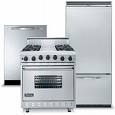
While the housing market is still troubled, the rental market is strong from coast to coast. With vacancies low, you might be thinking that you don’t need to do a thing to keep prospective tenants interested in your rental properties.
But being in the rental property business means generating as much rental income as possible. And if you can make your rental units more attractive to prospective tenants, you may be able to attract better tenants and make more income, too.
In fact, upgrading your rental is not an expense—rather, it’s an investment that should earn you a return. Compare the cost of each upgrade with the corresponding possible increase of rent to determine whether it makes sense to do it.
Perhaps you don’t need to completely renovate every rental unit. Think about ways to maximize the rent you can charge, based on size, location and condition of the rental unit, as well as what the competition is charging. Here are some possible upgrades that won’t break the bank, and can push your rent up:
Kitchen: Replacing countertops and painting cabinets will change the entire look of the kitchen. If you’re pursuing a higher-end tenant, replace those old formica countertops with granite. And if the kitchen has tired old oak cabinets, give them a fresh coat of white paint and some new hardware: instant style!
Bathroom: You can easily replace a worn-out vanity with a new one; add a new faucet, a new light fixture and a nice-looking sink—and the entire room changes. If the flooring has seen better days, large tiles are not very expensive; or, install a solid piece of marmoleum to make a big difference.
Outdoors: Spruce up the patio area or add a small deck. Tenants love having space to relax outside.
Invest in New Appliances: There’s nothing worse-looking to a prospective tenant than a dirty or worn out old stove, refrigerator or dishwasher. Look for a good deal on a package—or buy used. You can find great deals on nearly-new appliances on Craigslist.
Closet Space: Find ways to add storage. Tenants love walk-in closets and built-in shelves. Easy-to-install closet systems are available at most hardware stores and they can completely change the look and functionality of every closet.
If you want to attract higher-end tenants—and increase your rental income—these simple upgrades can be a quick and easy way to do it.
Learn more about protecting your rental property and assets through tenant background checks. Proper tenant screening will ensure you are leasing to the best possible tenants.
Posted by Teresa on January 14, 2011 under Landlord Paperwork and Forms, Landlord Tips | 
 If you’re a landlord who is selling your rental property, here are some guidelines for notifying your tenants. Laws and regulations vary according the city and state where you live, so check yours for specifics.
If you’re a landlord who is selling your rental property, here are some guidelines for notifying your tenants. Laws and regulations vary according the city and state where you live, so check yours for specifics.
- Double-check your lease, which may or may not address the sale of the property. Many large apartment building change hands without the tenants knowing, but for single family residences, small buildings and duplexes, it’s more difficult to show and sell a property without tenants knowing something is going on.
- If a tenant asks what’s up, be honest. Reassure them that the new owner will welcome them as tenants. Do what you can to avoid losing any tenants before the sale is final.
- It’s not generally required that you notify tenants that the building is going on the market. However, if you need entry to a unit to show a potential buyer, follow the standard notification period you use before entering a tenant’s unit.
- Remember that happy tenants are a big selling point. Try to avoid numerous interruptions and make an attempt to accommodate the tenant’s schedule.
- Most questions you receive will be regarding security deposits. Let tenants know if you and the buyer decide to:
a. refund all security deposits so new owner can collect them anew;
b. transfer existing security deposits to the new owner.
- When the sale is completed, send a notification to each tenant with the effective date that you will no longer own the building or accept rent payments. Ideally, this would arrive at the same time as a letter from the new owner, directing tenants where and to whom to send rent payments.
- State laws vary, but in general, once the sale is completed, the new owner is obligated to honor all existing leases. Whether they do or not—or whether tenants wish to continue with the lease or not—is no longer your problem.
Posted by Teresa on November 30, 2010 under Landlord and Tenant FAQs, Landlord Paperwork and Forms | 
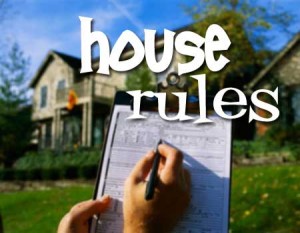 Many landlords we hear from believe that a thorough, well-written and lawyer-approved lease should contain all the rules and regulations a tenant needs to follow. And that’s partly true. But there’s a difference between the terms of a lease and the everyday policies you want your tenants to follow.
Many landlords we hear from believe that a thorough, well-written and lawyer-approved lease should contain all the rules and regulations a tenant needs to follow. And that’s partly true. But there’s a difference between the terms of a lease and the everyday policies you want your tenants to follow.
As a rule, leases are where the legalese lives: the legal description of the property, legal names of the parties involved, legal termininology, and the landlord’s legal recourse when terms are not followed. The “house rules” are generally more relaxed in language, are more flexible (i.e., they can change at any time with notice to all residents) and are simply intended to help everyone get along better and live in harmony. They are generally not legally-enforceable documents.
A signature on your list of policies or house rules is just as important as the signature on the lease. You want to be clear that your tenant understands the rules and agrees to abide by them. Review them together at the time of the lease signing, and be sure to ask if any item needs clarification.
10 Items to Include in Your Rental Property Rules
- Noise: Emphasize that consideration for other tenants is required, and that while your rental unit is well-constructed, it is not to be considered sound proof. Noises that disrupt others’ quiet enjoyment are not allowed. Include quiet hours, if desired.
- Window Treatments: Here you’ll include whether or not blinds or drapes are included with the rental unit and what care they require. If no treatments are provided, you may want to specify what color and type of coverings are allowed—and what are not allowed (like aluminum foil).
- Keys: Any key replacement fee should be included here, as well as emergency lock-out fees if a tenant forgets his or her keys after hours.
- Inclement Weather Procedures: Inform tenants of your requests during times of high winds, low temperatures, or high rain, as well as thermostat settings when the rental unit is occupied for specified lengths of time.
- Trash and Recycling: Tenants need to know what can be recycled and where it goes, along with non-recyclable trash.
- Parking: Where tenants are allowed to park, how many vehicles each unit is allowed to keep onsite, where not to park, and whether or not non-running vehicles are allowed are some of the rules you’ll want to spell out here.
- Common Areas: Are tenants allowed to leave property in common areas like hallways, sidewalks and patios? Who is responsible for clearing snow and ice from walkways? Spell these things out here.
- Storage: Indicate where tenant storage is located, how they can access it, and any limitations (flammables, vehicles, dangerous chemicals, etc).
- Guests: Include things like where guests may park their vehicles and tenants’ responsibilities for their guests.
- Bicycle Parking: As bicycle commuting becomes more popular, many tenants will want to know where they can park their bikes. If you don’t want them chained to fences or balcony railings, specify where bike parking is allowed. Better yet, create special areas for bikes that are convenient and secure for cycling tenants.
Presenting a friendly list of house rules lets all tenants know what is expected of them and their fellow tenants. After all, who (besides fraternity kids, perhaps) wants to live in a place where there are no rules?
Posted by Teresa on December 11, 2009 under Housing Trends | 
The latest statistics from the US housing market slide point to what may be a new reality—and a key to economic recovery. More Americans than ever are walking away from homes and mortgages they are upside-down in and replacing a monthly house payment with a monthly rent payment.
The combination of mortgage balances that far exceed the value of their home and cheap rents for premium housing is driving people away from the former ideal of home ownership. Statistics gathered from national reports reveal that US home ownership has declined more in the last five years—from 69.2% to 67.6%–than in the last 20.
While some people simply need to save money, due to job losses or other economy-related factors, others appear to be taking advantage of a situation they blame on banks and the economy. Discontinuing mortgage payments and waiting for the bank to kick them out frees up cash for vacations and more restaurant meals.
These so-called “strategic defaults” by homeowners who can afford to pay are projected to exceed one million in 2009, according to credit firm Experian. Folks who purchased overpriced homes with flawed mortgages find that they can still live on golf courses or in exclusive neighborhoods by renting someone else’s foreclosed home.
The strange effects on the economy are two sides of the same coin: banks and investors stand to face huge losses as more people default on their mortgages, leading to potential losses to taxpayers; on the other side is an unprecedented debt relief situation that can put more cash in consumers’ pockets to offset unemployment. According to data provider LPS Applied Analytics, the added cash flow could mean $5 billion per month.
Adding to the rush to mortgage default is the declining stigma in losing a home. When the minority becomes the average person, whatever was wrong becomes okay. The outcome is unpredictable, but for landlords and rental property investors, one upside is more renters coming into the market. Renters with foreclosures on their credit histories.
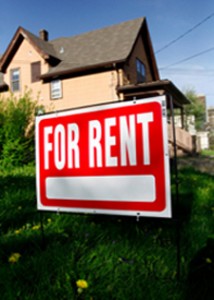 The latest statistics from the US housing market slide point to what may be a new reality—and, perhaps, a key to economic recovery. More Americans than ever are walking away from homes and mortgages they are upside-down in and replacing a monthly house payment with a monthly rent payment.
The latest statistics from the US housing market slide point to what may be a new reality—and, perhaps, a key to economic recovery. More Americans than ever are walking away from homes and mortgages they are upside-down in and replacing a monthly house payment with a monthly rent payment.
The combination of mortgage balances that far exceed the value of their home and cheap rents for premium housing is driving people away from the former ideal of home ownership. Statistics gathered from national reports reveal that US home ownership has declined more in the last five years than in the last 20—from 69.2% to 67.6%.
While some people simply need to save money because of job losses or other economy-related factors, others appear to be taking advantage of a situation they blame on banks and the economy. Discontinuing mortgage payments and waiting for the bank to kick them out frees up cash for vacations and more restaurant meals.
These so-called “strategic defaults” by homeowners who can afford to pay are projected to exceed one million in 2009, according to credit firm Experian. Folks who purchased overpriced homes with flawed mortgages find that they can still live on golf courses or in exclusive neighborhoods by renting someone else’s foreclosed home.
The strange effects on the economy are two sides of the same coin: banks and investors stand to face huge losses as more people default on their mortgages, leading to potential losses to taxpayers; on the other side is an unprecedented debt relief situation that can put more cash in consumers’ pockets. According to data provider LPS Applied Analytics, the added cash flow could mean $5 billion per month.
Adding to the rush to mortgage default is the declining stigma in losing a home. When the minority becomes the average person, whatever was considered “bad” or “wrong” becomes “okay.” (Everybody else is doing it, why shouldn’t we?) The outcome is unpredictable, but for landlords and rental property investors, one upside is more renters coming into the market. Landlords must decide how to deal with these new renters—with foreclosures on their credit histories.
Posted by Teresa on December 8, 2009 under Screening and Background Checks, Tenant Credit Checks, Tenant Screening & Background Checks | 
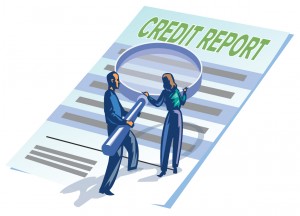 Tenant screening involves conducting background checks on potential tenants. Typical checks include tenant credit check, criminal background check, and tenant rental history. Landlords and rental property managers also have the option to check previous addresses, identity and name validation, address validation, evictions, liens, bankruptcies, and sex offender status.
Tenant screening involves conducting background checks on potential tenants. Typical checks include tenant credit check, criminal background check, and tenant rental history. Landlords and rental property managers also have the option to check previous addresses, identity and name validation, address validation, evictions, liens, bankruptcies, and sex offender status.
Here are some dos and don’ts to consider when making the decision to screen tenants:
- Do keep the screening process consistent: screen every applicant, every time.
- Don’t make yourself vulnerable to discrimination suits by screening applicants based on appearance or other subjective attributes.
- Don’t skip the tenant screening for an applicant who speaks well or dresses nicely, or the tenant applicant who drives a nice car—again, these are subjective observations that do not mean they will pay rent on time.
- Do protect your other tenants and the neighbors surrounding your rental property by including criminal history in your background check process.
- Do choose your screening service carefully. Are they a Better Business Bureau Accredited Business and Fair Credit Reporting Act (FCRA)-Compliant Consumer Reporting Agency? Is the staff FCRA Certified and Bonded?
- Do ensure that your screening service employs high security measures, such as fingerprint scanners, controlled access, monitored facilities, and proper disposal techniques.
- Don’t use a screening service without nationwide coverage and access to all three credit bureaus.
- Do keep all information learned from a tenant credit report in strictest confidence.
- Don’t neglect to provide a tenant applicant with a copy of the report, and to advise them in writing if you reject them for credit reasons.
Posted by Teresa on December 3, 2009 under Housing Trends | 
 Zillow, the popular home-price website, also conducts surveys of homeowners, and occasionally publishes the results. Last month, their report showed that there is much confusion over pricing and home values.
Zillow, the popular home-price website, also conducts surveys of homeowners, and occasionally publishes the results. Last month, their report showed that there is much confusion over pricing and home values.
In the northeast, home values are rising more than their owners realize. Only 20% of homeowners believed their homes gained value over the past 12 months—but 31% of homes in the region actually did.
To contrast, homeowners in the west are more optimistic—but unrealistic. 28% of homeowners believe their homes gained value, but only 17% actually did!
Nationally, the numbers were 25% of homeowners believing they gained value in their homes and 22% that actually did. 49% believed their homes lost value over the past 12 months—and in reality, a whopping 72% did.
This confusing situation could be why real estate investors and buyers (other than first timers) are holding off on purchasing property—until prices stabilize.The Zillow report also revealed that fewer Americans are underwater in their homes (owing more than it is worth). But, as job recovery remains slow, the 14% of all American mortgages delinquent or already in foreclosure will increase—and put more vacant homes for sale or for rent in a market that is already saturated with more houses and apartments than demand can support.
It looks like the housing recovery real estate investors and landlords have been awaiting is still eluding them. The US Census Dept. reported that one in seven housing units was vacant in the third quarter—the highest number since the government began reporting the data in 1965. Until employment grows again, the outlook for a healthy housing market is less than stellar.
 In most areas, keeping residents and your rental property safe doesn’t require bars on the windows and doors. Common-sense practices can deter thieves from targeting your property, including crime-fighting landscape design.
In most areas, keeping residents and your rental property safe doesn’t require bars on the windows and doors. Common-sense practices can deter thieves from targeting your property, including crime-fighting landscape design.








